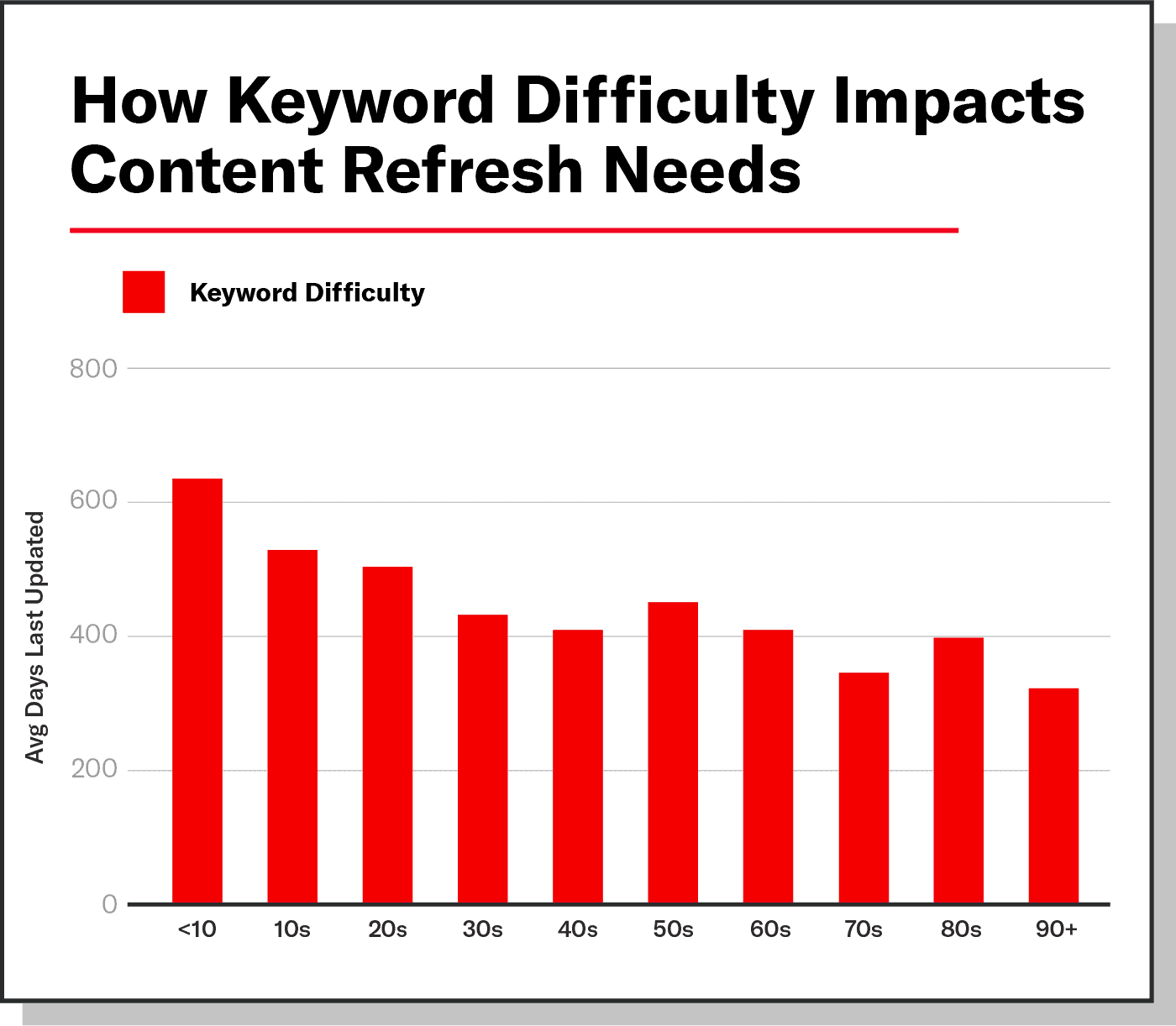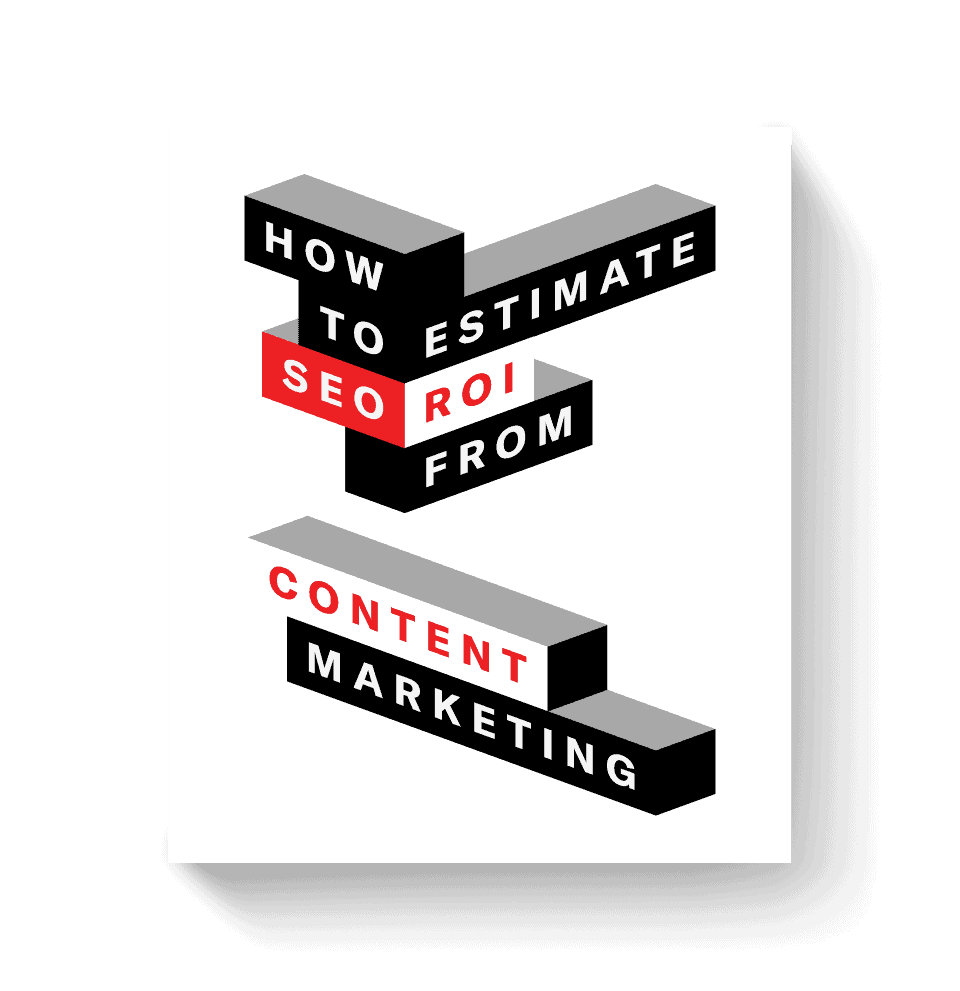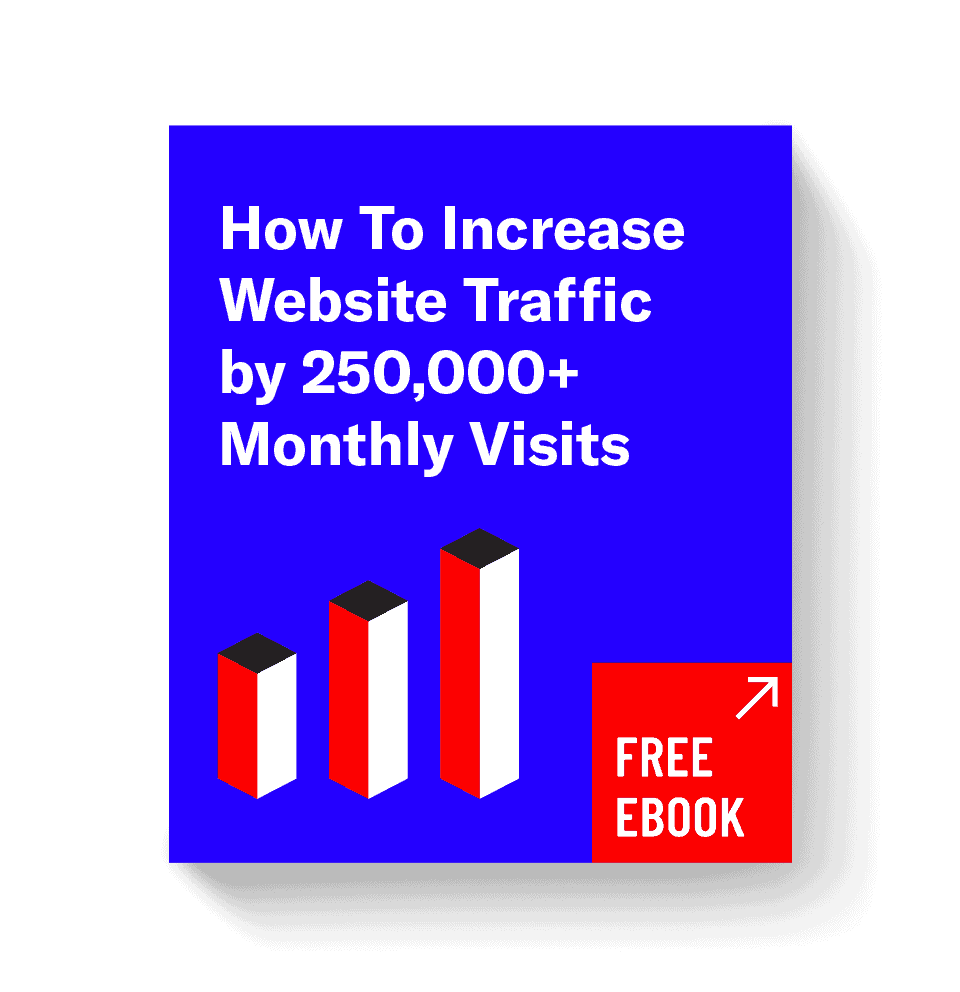We found that page-one-ranking content for popular keywords gets updated within the last 1.31 years, on average.
So much for evergreen content, eh?
As SEOs and content marketers, we’re always looking for an edge in search. At Siege, we have a history of advocating for keeping your freshness distance low to improve rankings. Now, many years later, we finally have the data to support our recommendations.
First, let’s put everything on the table — literally:
| Phrase Match | # of Keywords | Cumulative Search Volume | SERPs With Dates Present (%) | Average Days Since Last Update |
|---|---|---|---|---|
| best software | 982 | 462,950 | 97.76% | 143 |
| best | 989 | 26,319,000 | 93.93% | 235 |
| rates | 996 | 10,200,000 | 68.07% | 246 |
| ideas | 998 | 12,115,200 | 96.79% | 299 |
| loan | 998 | 12,469,800 | 71.04% | 313 |
| recipes | 999 | 17,165,700 | 98.30% | 384 |
| insurance | 992 | 19,563,000 | 48.89% | 401 |
| vs | 840 | 93,510 | 93.93% | 406 |
| review | 993 | 5,354,100 | 92.75% | 465 |
| trends | 995 | 1,374,550 | 93.27% | 468 |
| alternatives | 1000 | 970,300 | 96.40% | 468 |
| cheap | 982 | 9,814,300 | 55.70% | 496 |
| how to | 999 | 30,733,000 | 96.40% | 503 |
| what is | 1000 | 33,345,000 | 88.10% | 554 |
| types | 996 | 6,538,500 | 92.27% | 573 |
| tips | 997 | 1,690,300 | 87.56% | 663 |
| statistics | 994 | 1,280,800 | 79.07% | 941 |
| calculator | 999 | 44,480,900 | 54.35% | 967 |
| Total | 17,749 | 233,970,910 | 83.59% | 474 |
Phrase Match Keyword Variants
We used Ahrefs to export the top 1,000 phrase match keywords using the most common keyword types we could think of.
Terms like “What is [X]” and “How to [X]” are the bread and butter of many content strategies (regardless of industry). Therefore, this approach helped us broaden this data’s appeal as much as possible.
Some keywords exported from Ahrefs were NSFW (i.e., porn) or poorly formatted, which is why some variants have less than 1,000 keywords. But I think it’s fair to say that we have a pretty statistically significant sample size with the SERPs of 17,749 total keywords analyzed, which encourage nearly 234 million searches per month.
More Frequent Content Updates Are Needed
Analyzing the average dates (when present — but more on that soon) within the SERP, we found that the average last update date for all keyword variants was 477 days. Let’s do the math for you: 477/365 = 1.31 years.
Of course, the search intent and keyword matter a lot when considering how often you should update content.
For example, “best [X] software” keywords are far brighter and bushier-tailed than the others in our analysis, coming in hot at 197 days since the last update, on average. Using this data, Siege recommends to update this piece every six months (if not more frequently), especially considering how high-intent and conversion-focused that traffic can be.
It’s worth noting that this is just the average, and unfortunately, some SERPs are updating far more frequently. For example, at the time we pulled this data, the SERP for “best VPN software” had been last updated three days ago, on average.
It’s also interesting to note that “best” keywords, which are broader but still heavily product-focused (i.e., “best smart watches”), also require more frequent updates: 235 days on average. I knew innovation happened fast, but I didn’t know better products were coming out that fast.
Keyword variants, including “rates” (i.e., “mortgage rates”), were also updated more frequently every 246 days, on average. This is quite intuitive given how quickly rates can change (this is not macroeconomic financial advice).
Less Frequent Content Updates Needed
Keyword variants such as “what is” and “how to” naturally require less frequent updates because definitions and common processes change very little over time. We don’t need to reinvent the wheel — just the SEO flywheel.
Calculators fall within a similar bucket because, well, math changes very little. However, dates were featured less often on page one of the SERP for calculator queries (54%), which might impact the perceived need to update those pages.
Still, Updating Content is Needed
Overall, the average ranking page for every phrase match keyword we analyzed was last updated within the last three years. Hopefully, this is a wake-up call for refreshing your content and watching content decay.
At Siege, we recently launched a tool for our clients to do just that: Rise.
How Keyword Difficulty Influences Update Frequency
When looking at the correlation between keyword difficulty and the update frequency of content, there is a clear trend towards time-sensitivity for higher keyword difficulty.
As you can see, keywords with a difficulty score less than 10, have been updated within the last 1.74 years, while 90+ difficulty keywords are updated with far greater frequency: 320 days on average — less than one year.
If you’re looking for a methodology for your content refresh strategy, you could simply filter your keyword profile from high-to-low KD and work your way down the list. Mileage may vary.
How Often Dates Are Featured on Google SERPs
SEOs know the pain of the wrong date being pulled into the SERP or when Google picks and chooses when to feature it — and usually it chooses not to show a date immediately after updating.
Turns out, 83.5% of Google’s SERPs within this study do meaningfully feature dates.
Maybe unsurprisingly, if you’ve been searching for a killer new recipe to mix things up recently, “recipe” SERPs were more likely to include dates. Over 98% of recipe SERPs featured dates in this study.
“Best software” keywords are making headlines again within this data study by returning a preponderance of dates within the search results, at over 97%. This indicates that blog content (which is more typically dated compared to landing pages) is the right content type for these pages.
“Ideas” related keywords are also a timely topic to keep up-to-date, with 96% of SERPs featuring dates.
“Calculator” keywords only had dates on the SERP 54% of the time on average. This is probably because these pages typically fall outside the typical blog content, where dates are commonly extractable.
Conclusion: Refresh Content More Regularly
Sometimes, the best content strategy isn’t to dive deep into a blue ocean of net-new content but to clean up your green, algae-covered content lake.
Perhaps uncommon advice from a content marketing agency, but sometimes the best course of action is to focus on optimizing what you already have, which will keep you from straying off topic.
Of course, if you are creating loads of net-new content, include a meaningful proportion of your efforts and/or budget to update your existing content.
At Siege, we are building the refresh frequency recommendation into our KOB keyword research process to integrate a strategy for updates into our content roadmap:
If you’d like us to run a micro- or macro-level analysis on your industry’s refresh frequency, reach out, and we can schedule time to discuss and talk through.
Methodology
Using the Google Search API, we pulled the top 10 results for each keyword, analyzing the “htmlSnippet” for each result where Google often features the last updated date.
When Google features “[X] days ago” instead of a proper date, we extracted the [X] and created our own date (i.e., MM-DD-YYYY) by taking TODAY (the date of data collection) and subtracting [X].
Many individual search results don’t feature the date, so we removed those results from this analysis, ordering the present dates to arrive at a median date since the last update. We then calculated the number of days between TODAY and this median date.
When no meaningful dates are present on a given SERP, the tool would return null, and we could use that data to identify the percentage of SERPs featuring dates.
If you want to dig into the data, you can view everything here.






